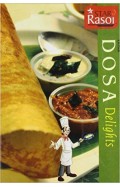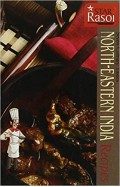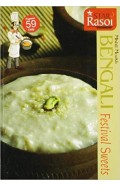Pharaoh: art and power in ancient Egypt
By: Marie Vandenbeusch
-
Rs 10,795.50
- Rs 11,995.00
- 10%
You save Rs 1,199.50.
Due to constant currency fluctuation, prices are subject to change with or without notice.
Explores the ideals, symbolism and ideology of Egyptian kingship and uncovers the stories behind the objects and images left as a legacy by this ancient civilisation.
The rulers of ancient Egypt were not always male, nor always Egyptian. At times, Egypt was divided by civil war, conquered by foreign powers or ruled by competing kings. While some kings were revered – such as Thutmose III who expanded Egypt’s empire to its largest extent – the memory of others was officially erased. Many of the objects surviving from ancient Egypt project the image the pharaoh wanted us to see – however this book explores the reality and the many challenges of ruling one of the greatest civilisations the world has ever seen.
After an introduction into the historic and geographic timeframe of the ancient Pharaohs, the book explores royal iconography, decoding the insignia worn and held by the king, or the names and titles covering most royal monuments. The core of the book investigates the main roles of the king, as high priest, as the head of the royal family, as the administrative ruler of the country and as the leader of the army and diplomat. Following an investigation into the preparation for the king’s eternal life, from the rituals to the building of a tomb, the book closes on a contemporary perspective from Egypt and how the notion of the Pharaoh still resonates today.
The book covers 3,000 years of history – highlighting research on key pieces from the British Museum’s outstanding collection of Egyptian antiquities.
Explores the ideals, symbolism and ideology of Egyptian kingship and uncovers the stories behind the objects and images left as a legacy by this ancient civilisation.
The rulers of ancient Egypt were not always male, nor always Egyptian. At times, Egypt was divided by civil war, conquered by foreign powers or ruled by competing kings. While some kings were revered – such as Thutmose III who expanded Egypt’s empire to its largest extent – the memory of others was officially erased. Many of the objects surviving from ancient Egypt project the image the pharaoh wanted us to see – however this book explores the reality and the many challenges of ruling one of the greatest civilisations the world has ever seen.
After an introduction into the historic and geographic timeframe of the ancient Pharaohs, the book explores royal iconography, decoding the insignia worn and held by the king, or the names and titles covering most royal monuments. The core of the book investigates the main roles of the king, as high priest, as the head of the royal family, as the administrative ruler of the country and as the leader of the army and diplomat. Following an investigation into the preparation for the king’s eternal life, from the rituals to the building of a tomb, the book closes on a contemporary perspective from Egypt and how the notion of the Pharaoh still resonates today.
The book covers 3,000 years of history – highlighting research on key pieces from the British Museum’s outstanding collection of Egyptian antiquities.
Pharaoh: art and power in ancient Egypt
By: Marie Vandenbeusch
Rs 10,795.50 Rs 11,995.00 Ex Tax :Rs 10,795.50
Zubin Mehta: A Musical Journey (An Authorized Biography)
By: VOID - Bakhtiar K. Dadabhoy
Rs 892.50 Rs 1,050.00 Ex Tax :Rs 892.50
The Golden Road - How Ancient India Transformed the World
By: William Dalrymple
Rs 4,135.50 Rs 4,595.00 Ex Tax :Rs 4,135.50
A Grand Tour of the Roman Empire by Marcus Sidonius Falx
By: Dr. Jerry Toner
Rs 2,965.50 Rs 3,295.00 Ex Tax :Rs 2,965.50
The Children of Ash and Elm: A History of the Vikings
By: Neil Price
Rs 3,865.50 Rs 4,295.00 Ex Tax :Rs 3,865.50
Persia - Land of Emperors And Kings
By: Iftikhar Salahuddin
Rs 7,200.00 Rs 8,000.00 Ex Tax :Rs 7,200.00
Troy: Our Greatest Story Retold (Stephen Frys Greek Myths)
By: Stephen Fry
Rs 2,515.50 Rs 2,795.00 Ex Tax :Rs 2,515.50
The Origins of Political Order From Prehuman Times to the French RevolutioN
By: Francis Fukuyama
Rs 4,045.50 Rs 4,495.00 Ex Tax :Rs 4,045.50
Manning Up: How the Rise of Women Has Turned Men into Boys
By: Kay Hymowitz
Rs 845.75 Rs 995.00 Ex Tax :Rs 845.75
The Obama Syndrome: Surrender At Home War Abroad
By: Tariq Ali
Rs 1,100.75 Rs 1,295.00 Ex Tax :Rs 1,100.75
The Quest For Meaning: Developing A Philosophy Of Pluralism
By: Tariq Ramadan
Rs 1,185.75 Rs 1,395.00 Ex Tax :Rs 1,185.75
The Golden Road - How Ancient India Transformed the World
By: William Dalrymple
Rs 4,135.50 Rs 4,595.00 Ex Tax :Rs 4,135.50
A Grand Tour of the Roman Empire by Marcus Sidonius Falx
By: Dr. Jerry Toner
Rs 2,965.50 Rs 3,295.00 Ex Tax :Rs 2,965.50
The Children of Ash and Elm: A History of the Vikings
By: Neil Price
Rs 3,865.50 Rs 4,295.00 Ex Tax :Rs 3,865.50
Persia - Land of Emperors And Kings
By: Iftikhar Salahuddin
Rs 7,200.00 Rs 8,000.00 Ex Tax :Rs 7,200.00
Troy: Our Greatest Story Retold (Stephen Frys Greek Myths)
By: Stephen Fry
Rs 2,515.50 Rs 2,795.00 Ex Tax :Rs 2,515.50
Five Go To Smugglers Top the Famous Five Book 4
By: Enid Blyton
Rs 405.00 Rs 450.00 Ex Tax :Rs 405.00
Zubin Mehta: A Musical Journey (An Authorized Biography)
By: VOID - Bakhtiar K. Dadabhoy
Rs 892.50 Rs 1,050.00 Ex Tax :Rs 892.50
Pharaoh: art and power in ancient Egypt
By: Marie Vandenbeusch
Rs 10,795.50 Rs 11,995.00 Ex Tax :Rs 10,795.50
The Golden Road - How Ancient India Transformed the World
By: William Dalrymple
Rs 4,135.50 Rs 4,595.00 Ex Tax :Rs 4,135.50
A Grand Tour of the Roman Empire by Marcus Sidonius Falx
By: Dr. Jerry Toner
Rs 2,965.50 Rs 3,295.00 Ex Tax :Rs 2,965.50
The Children of Ash and Elm: A History of the Vikings
By: Neil Price
Rs 3,865.50 Rs 4,295.00 Ex Tax :Rs 3,865.50
Persia - Land of Emperors And Kings
By: Iftikhar Salahuddin
Rs 7,200.00 Rs 8,000.00 Ex Tax :Rs 7,200.00
TUTANKHAMUN: 100 years after the discovery of his tomb leading Egyptologist Joyce Tyldesley unpicks the misunderstandings around the boy king's life, death and legacy
By: Joyce Tyldesley
Rs 3,905.75 Rs 4,595.00 Ex Tax :Rs 3,905.75
Troy: Our Greatest Story Retold (Stephen Frys Greek Myths)
By: Stephen Fry
Rs 2,515.50 Rs 2,795.00 Ex Tax :Rs 2,515.50














-120x187.jpg?q6)





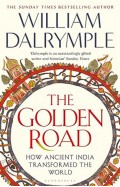
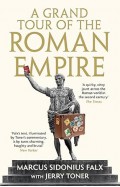
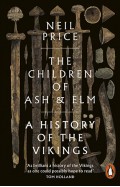
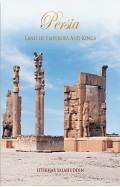
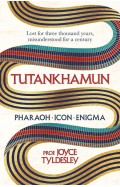
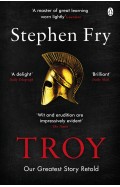
-120x187.jpg?q6)

